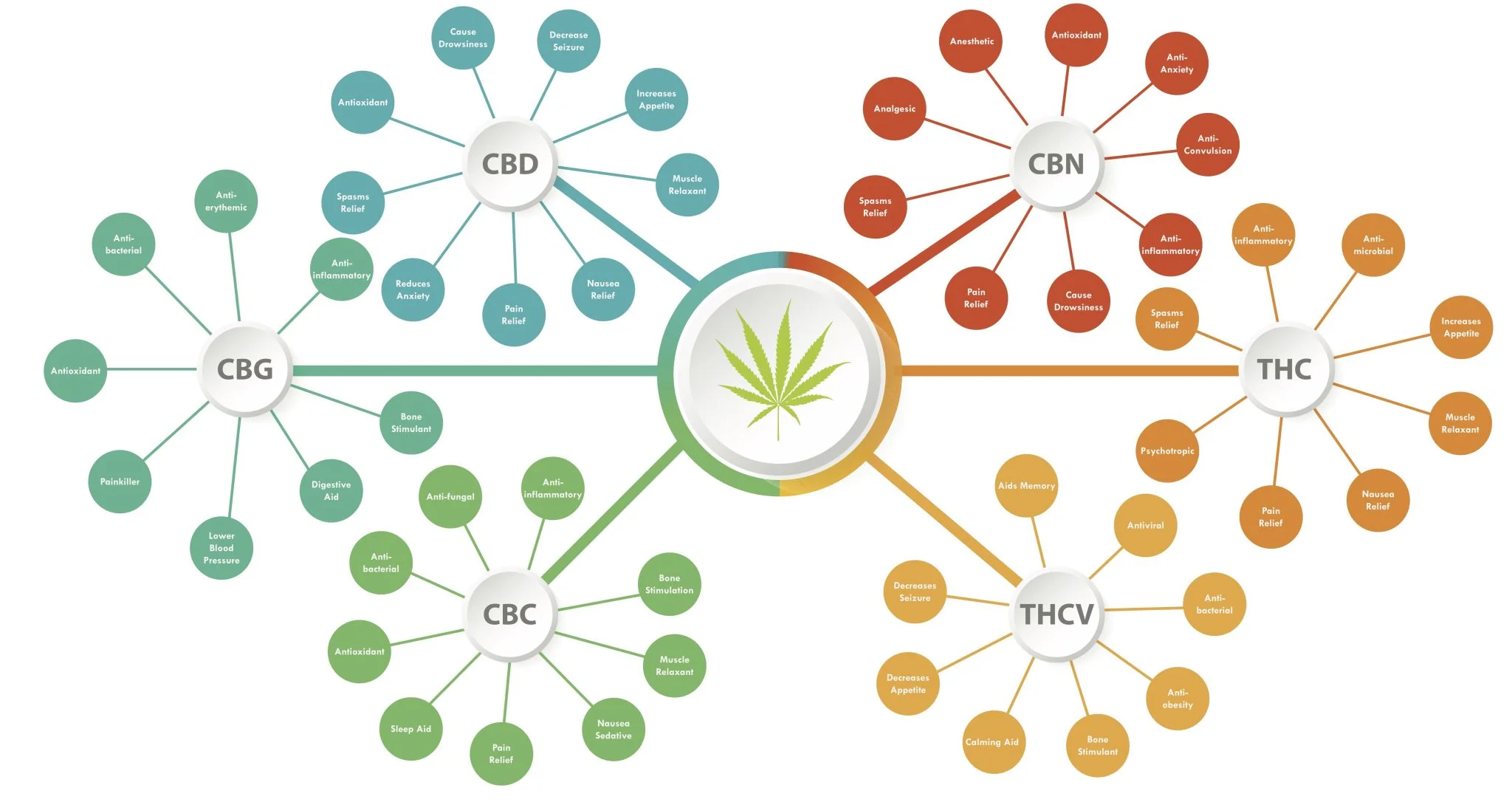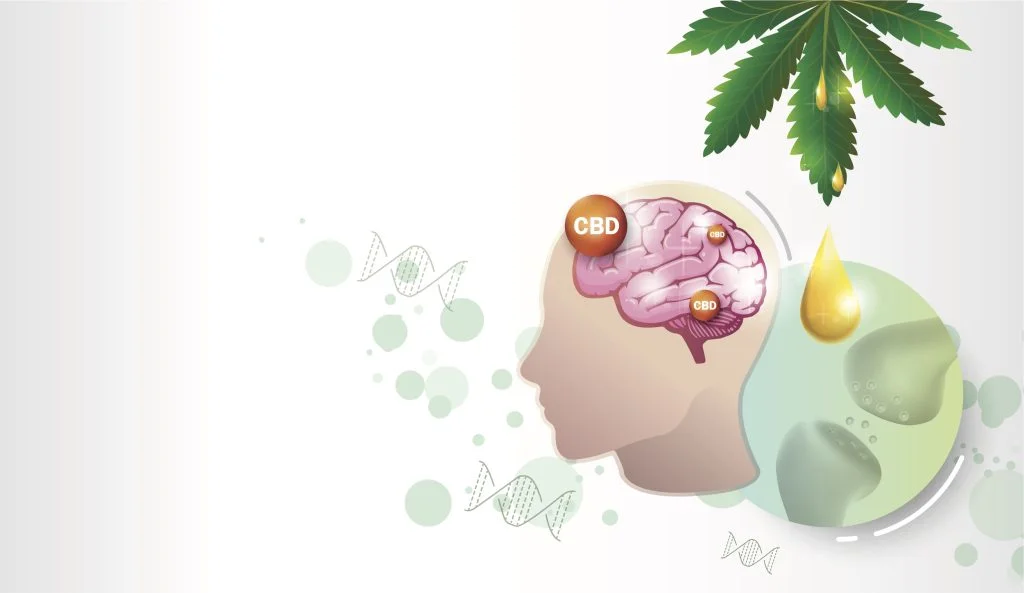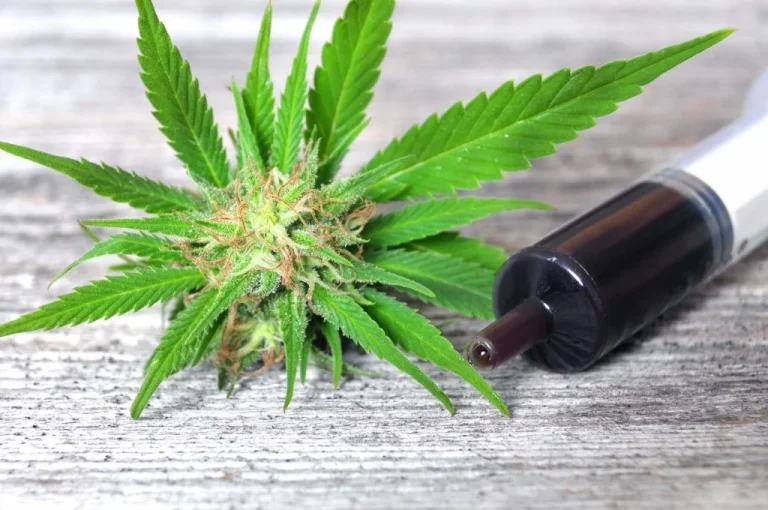Table of Contents
ToggleWhile we all love cannabis for its ability to make us giggle, it’s also well sought-after for its pain-relieving, comforting properties. But, what causes this relief? What is the best cannabinoid for pain?
If you’re someone who seeks cannabis primarily to ease your aches and pains, there are specific cannabinoids you want to keep an eye out for to achieve the most efficient experience possible.
Today, we’re covering the best cannabinoids for pain, as well as what weed is best for pain strain-wise. By the time you’re done reading, you’ll be fully set to start puffing on the most comforting cannabinoids and strains out there.
Wait, What is a Cannabinoid?
First things first, what is a cannabinoid?
In simple terms, cannabinoids are the compounds found in the cannabis plant family that interact with the receptors in our body — specifically, the endocannabinoid system (ECS).
The ECS is an incredible network that regulates many essential processes, like mood, memory, appetite, and pain sensation, just to name a few. When cannabinoids step in, they help to fine-tune this delicate system, giving rise to the various effects we experience.
Believe it or not, there are over 100 different cannabinoids, each with its own set of unique properties — and we’re still learning more about them every day.
The most famous of the cannabinoid bunch is undoubtedly THC (tetrahydrocannabinol), the compound responsible for that euphoric “high” sensation that cannabis is often associated with.
However, THC is just the tip of the iceberg. And, while this cannabinoid can be great for providing relief, it may not be the best cannabinoid for pain out there.
Best Cannabinoid for Pain
Though THC is arguably the most well-known cannabis compound, it’s not always the best cannabinoid for pain — not for everyone, at least.
THC may not be everyone’s ideal choice for reducing pain simply for the psychoactive component. Many people seeking pain relief aren’t necessarily wanting to get high; however, this goes hand-in-hand with THC.
Thus, many consumers have discovered that CBD is the best cannabinoid for pain in these circumstances.

CBD, short for cannabidiol, is a completely non-psychoactive cannabinoid that’s best known for its ability to promote relaxation and comfort. This is all due to its unique reaction to the endocannabinoid system.
It all starts with the way CBD interacts with the receptors in our ECS.
There are two primary receptors: CB1, predominantly found in the brain, and CB2, found in the immune system and peripheral nervous system.
CBD doesn’t bind directly to these receptors like THC does. Instead, it influences the ECS in more subtle ways, modulating the activity of other receptors and neurotransmitters involved in the pain response.
Here are some ways CBD may help with pain relief and promote comfort:
- Anti-inflammatory action: Inflammation is a natural response of our immune system to injury or infection, but chronic inflammation can lead to pain and discomfort. CBD has been shown to possess anti-inflammatory properties, helping to reduce the production of pro-inflammatory molecules and suppress the immune system’s response, leading to pain relief.
- Modulation of neurotransmitters: CBD can impact the release of neurotransmitters like serotonin, adenosine, and glutamate. These substances are involved in pain regulation, and by modulating their levels, CBD may help alleviate pain.
- Inhibition of pain signals: CBD has the ability to inhibit the transmission of pain signals in our nervous system. By interacting with the TRPV1 receptors, which are involved in the perception of pain, heat, and inflammation, CBD may help to desensitize these receptors and reduce the sensation of pain.
- Enhancement of endocannabinoids: Our body naturally produces its own cannabinoids, called endocannabinoids, which interact with the ECS. CBD may help to increase the levels of these endocannabinoids, enhancing their ability to reduce pain and inflammation.
Of course, these results aren’t going to be the same for every person, and some consumers may find other cannabinoids to provide the results they’re looking for.
Unfortunately, cannabis is not one-size-fits-all, so it may take a bit of trial and error before you find the best cannabinoid for pain for you.
Other Best Cannabinoids for Pain and Discomfort
In case CBD isn’t the best cannabinoid for pain and discomfort in your experience, don’t worry! There are plenty more for you to try.
Here are some of the other best cannabinoids for pain if you’re interested.
THC
THC, or tetrahydrocannabinol, is the most well-known and psychoactive cannabinoid found in cannabis. It’s responsible for the euphoric “high” sensation that people tend to associate with the precious plant.
Like CBD, THC has been shown to help reduce pain, but it works through a slightly different mechanism.
Essentially, THC has a high affinity for CB1 receptors, which are mainly found in the brain and central nervous system, as well as CB2 receptors, found in the immune system and peripheral nervous system.
By binding to these receptors, THC can modulate the release of neurotransmitters and influence pain signals, leading to a reduction in pain perception.
THC can also increase the production of certain neurotransmitters, like serotonin and dopamine, which are known to have pain-relieving and mood-boosting effects. This can contribute to an overall reduction in pain perception and promote a sense of well-being.
Along with that, THC is one of the best cannabinoids for pain simply for its distractibility.
The psychoactive effects of THC can also create a sense of euphoria and altered perception, which may help to distract users from their pain. This distraction can contribute to a subjective reduction in pain sensation.
CBG
If you’re seeking the best cannabinoid for pain but don’t want to get high, CBG is another great option.
CBG is short for cannabigerol, and it’s one of the lesser-known cannabinoids found in cannabis. Although it’s typically present in smaller amounts compared to THC and CBD, CBG has been gaining attention for its potential therapeutic benefits, including pain relief.
Like CBD, CBG has been shown to possess anti-inflammatory properties. It may help reduce inflammation by suppressing the production of pro-inflammatory molecules, such as cytokines and chemokines, which contribute to pain and discomfort.
By reducing inflammation, CBG may indirectly help relieve pain and discomfort throughout the body.
While CBG doesn’t bind to CB1 and CB2 receptors as strongly as THC does, it still interacts with these receptors, albeit in a more subtle manner. This interaction may help modulate the release of neurotransmitters involved in the pain response, leading to a reduction in overall pain.
Finally, CBG has been found to inhibit the COX-2 enzyme, which plays a significant role in the synthesis of prostaglandins – hormone-like substances that promote inflammation, pain, and fever.
By inhibiting COX-2, CBG may help reduce the production of prostaglandins, leading to decreased inflammation and pain.

THCV
Lastly, one of the best cannabinoids for pain is THCV.
Not to be confused with THC, THCV is short for tetrahydrocannabivarin. It’s a lesser-known cannabinoid that shares a similar molecular structure to THC; however, it exhibits some distinct properties that make it an interesting candidate for pain relief and comfort.
THCV is unique in that it can act as both an agonist and antagonist of the CB1 and CB2 receptors. This dual action allows THCV to modulate the release of neurotransmitters and help regulate the body’s pain response. Thus, overall pain perception may be lower with this unique compound.
Like other cannabinoids, THCV has been found to possess anti-inflammatory properties. By reducing inflammation, THCV may help alleviate pain associated with various inflammatory conditions, such as arthritis, inflammatory bowel disease, or sports injuries.
THCV has also been shown to activate the TRPV1 receptors, also known as the “capsaicin receptors.”
These receptors are involved in the sensation of pain, heat, and inflammation. When a compound like THCV activates these receptors, it can lead to desensitization and a decrease in pain signal transmission.
Ultimately, this leads to lowered pain perception and enhanced comfortability. AKA: total relaxation.
What Weed is Best for Pain?
When it comes to the best cannabinoid for pain, CBD is a little subjective. While this compound is undoubtedly helpful for lowering pain levels and promoting comfort, the best results come from a combination of relaxing cannabinoids as a whole.
So, with that in mind: what weed is best for pain? Which strains offer the most relaxing properties possible?
If you’re looking for the best weed for pain, you’ll want to find strains with high levels of both THC and CBD. Strains like Suzy Q and ACDC both have significant CBD and THC levels, creating well-balanced, comforting results that consumers will love.
If you don’t mind getting a little stoney, strains like Nothern Lights, Blue Dream, and OG Kush tend to be ideal.
These weed strains have beautifully balanced cannabinoid levels, promoting the effects of various compounds like THC, CBD, CBG, and so much more.
Experiencing Natural Relief With Elevate Holistics
At the end of the day, the best cannabinoid for pain is going to be the compound that works best for your mind and body.
If you’re ready to experience natural pain relief and full-body comfort, the best place to start is by getting your medical marijuana card online with Elevate Holistics.
Elevate Holistics helps you get your MMJ card recommendation entirely online, right from the comfort of your home. Then, once you’re approved, you’ll gain access to the hundreds of helpful cannabinoids available in your local dispensary.
It’s time to tackle your aches and pains in a more natural way. Click here or click the button below to book an appointment with an expert MMJ doctor.









